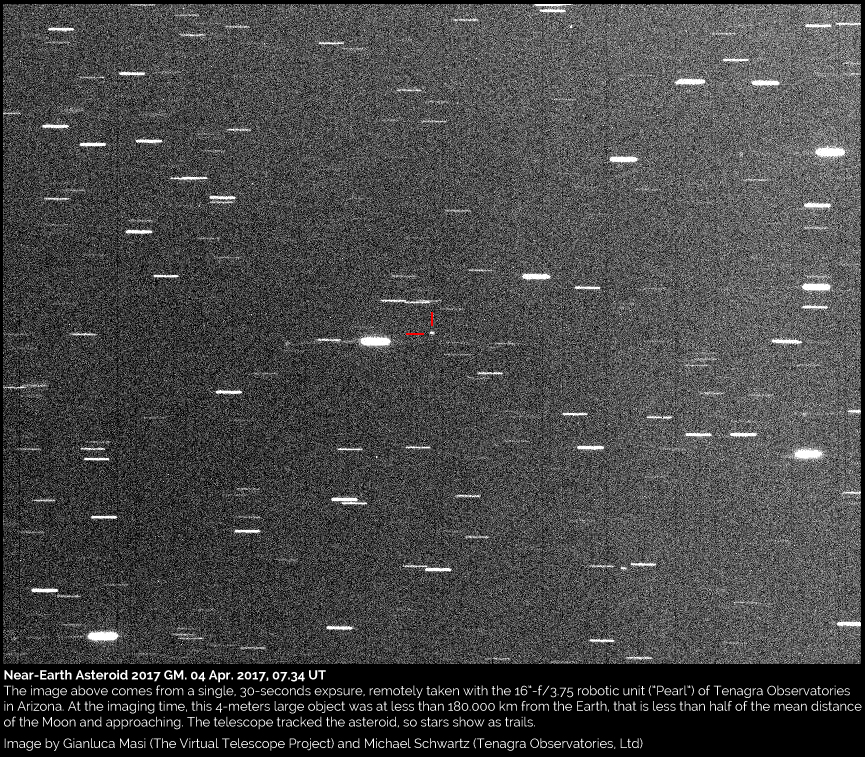A Car-Size Asteroid Just Whipped by Earth

A car-size asteroid was caught on camera just before it approached within 10,100 miles (16,300 km) of Earth today (April 4) — less than one-twentieth the distance from Earth to the moon.
The 12-foot-wide (3.6 meters) celestial visitor, called 2017 GM, whipped by at 11.5 miles per second (18.5 kilometers per second) compared to Earth early this morning. Scientists at the Mount Lemmon Survey in Arizona first spotted the asteroid yesterday, and researchers with Virtual Telescope Project and Tengara Observatories also snapped a photo before its closest approach with an Arizona telescope.
Based on its orbit, the little asteroid likely last passed by Earth in March 1961, according to NASA's Jet Propulsion Laboratory. However, it was much farther away that time — about 93 times the average Earth-moon distance, . It whipped far out after that, but eventually swung by Mars and Venus in 2013 and 2014, respectively, before making its way back to Earth. It's the 15th object to make a close approach to Earth this month, and it came by far the closest to our planet, according to the NASA data.
In March, a 10-foot-wide (3 m) object came 1,000 miles (1,600 km) closer to Earth's path. Like that asteroid, 2017 GM came in closer than satellites in high Earth orbit.
Email Sarah Lewin at slewin@space.com or follow her @SarahExplains. Follow us @Spacedotcom, Facebook and Google+. Original article on Space.com.
Get the Space.com Newsletter
Breaking space news, the latest updates on rocket launches, skywatching events and more!
Join our Space Forums to keep talking space on the latest missions, night sky and more! And if you have a news tip, correction or comment, let us know at: community@space.com.

Sarah Lewin started writing for Space.com in June of 2015 as a Staff Writer and became Associate Editor in 2019 . Her work has been featured by Scientific American, IEEE Spectrum, Quanta Magazine, Wired, The Scientist, Science Friday and WGBH's Inside NOVA. Sarah has an MA from NYU's Science, Health and Environmental Reporting Program and an AB in mathematics from Brown University. When not writing, reading or thinking about space, Sarah enjoys musical theatre and mathematical papercraft. She is currently Assistant News Editor at Scientific American. You can follow her on Twitter @SarahExplains.
